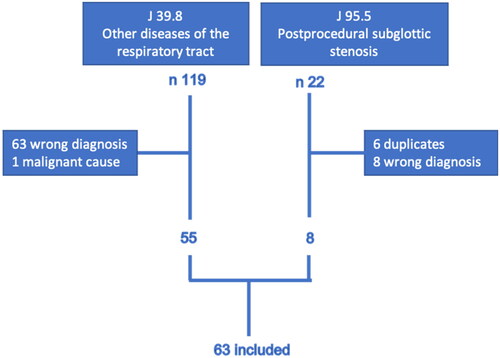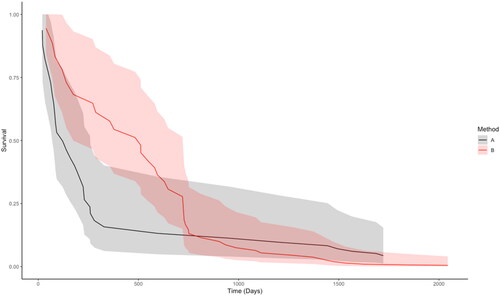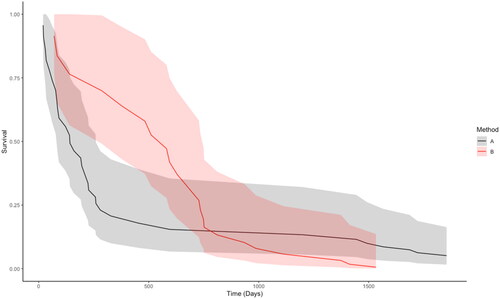Figures & data
Figure 1. Flow chart illustrating which diagnosis (ICD-10) patients were included also showing excluded cases.

Table 1. Case characteristics.
Figure 2. Estimated survival functions with corresponding approximate 95% confidence bands for the respective surgical method, obtained from stratifying the Cox PH analysis on method. Including rigid dilatation and submucosal resections in the balloon dilatation group. Method B (balloon dilation) has a greater estimated survival up until approximately 700 days, after which method B (balloon dilatation) in fact has a lower estimated survival. However, the confidence bands for the respective methods are overlapping throughout. A = CO2 Laser treatment. B = Balloon dilatation.

Figure 3. Estimated survival functions with corresponding approximate 95% confidence bands for the respective surgical method, obtained from stratifying the Cox PH analysis on method. In this analysis rigid dilatation and submucosal resection were excluded from the balloon dilatation group. Method B (balloon dilatation) has a greater survival up until approximately 700 days, after which balloon dilatation in fact has a lower survival. However, the confidence bands for the respective methods are overlapping throughout. Method A = CO2 laser treatment. Method B = balloon dilatation.

Data availability statement
The data that support the findings of this study are available on request from the corresponding author.
